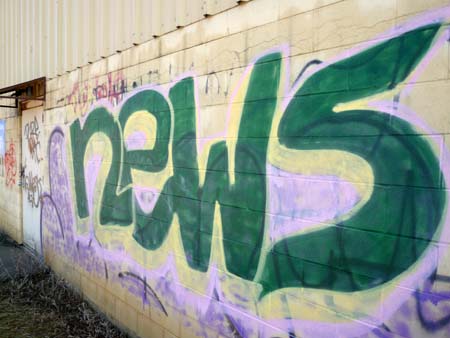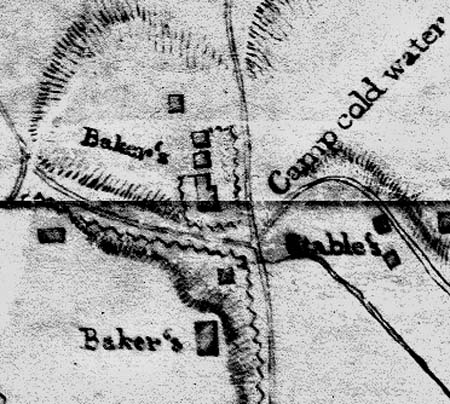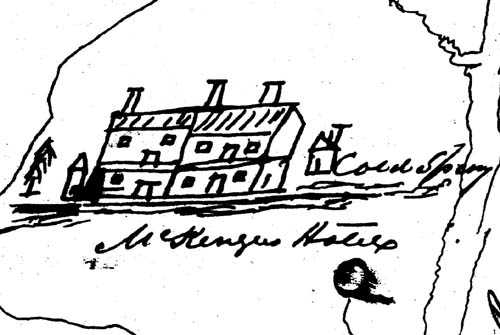On a muggy evening in late August 2000, at the Henry B. Whipple federal building at Fort Snelling, John Steinworth, a member of a loose coalition of Coldwater Spring supporters known as the Preserve Camp Coldwater Coalition (PCCC) stood up and spoke to the assembled agency representatives who had come to hear public comment about the impending transfer of the Bureau of Mines property to the Metropolitan Airports Commission (MAC). Steinworth talked about accomplishments of the coalition in bringing public attention to the effect of Highway 55 on the spring and the surrounding area. “We have been around quite some time.” Whoever gets the property Steinworth said, “gets us too. We come with the property.”
The 2000 meeting where this occurred came about because the Department of Interior had reached a decision about what would happen to Coldwater/Bureau of Mines property. Now the agency, through the Mississippi National River and Recreation Area (MNRRA), a branch of the National Park Service, wanted to get public input about what to put in the Memorandum of Agreement (MOA) with MAC, to protect the character of the property. After the meeting the public would have seven days–later extended to two weeks–to submit written comment.
Not all of the people there that night were members of PCCC, but all who were there were not happy. As John Steinworth also pointed out the Coldwater people felt that they had been pushed around and ignored in the process of determining the ultimate ownership of the property. They wanted to be heard not only on the MOA, but on the basic decision the Park Service was announcing. The Department of Interior and MNRRA wanted to keep things simple. The meeting was intended to start out with various officials speaking about the process. Then people were supposed to split up in smaller groups to discuss and give comments. After this was announced in the meeting, there was a lot of grumbling. Someone called for a vote. Very few people wanted to go into small groups. Most wanted to remain in the large group, so that everyone could hear what everyone said. Finally, after much hemming and hawing, officials acquiesced and the Coldwater people got the meeting they wanted, where everyone got to talk and say his or her piece.

Over the course of the next few, muggy hours, many people spoke, including both Coldwater people and public officials. The Coldwater people who spoke that night were from many different backgrounds and had come to support the preservation of the spring for many different reasons. Some had been involved in the Highway 55 “Stop the Reroute” opposition, but after the battle was lost they re-formed as the PCCC, to preserve the spring. The group met periodically at local restaurants and operated under a consensus-model of decision-making. Also involved and represented that night was the Mendota Mdewakanton Dakota Community, the only vocal Dakota support for preserving the spring, but a group with neither money nor federal recognition. Others were like Dave Fudally, a local resident who had gotten to know the area very well over many decades. He was and is an amateur historian who had been a pioneer in trying to convince agencies for several decades to preserve the area.
Though there are a wide diversity of opinions about many things, these diverse people had united in their support for the preservation of Coldwater. Notes of what was said that night are incomplete, but it appears that most of the discussion was about the advisability of giving the property to MAC. Many wanted the Park Service to keep it and manage it. There was fear that the Airports Commission would fill the property with parking lots or would do something else to develop the property.
Lynn Levine pointed out that people supporting the preservation of Coldwater had been lied to a lot. She was concerned about the ongoing health of the spring. Jim Anderson and Linda Brown of the Mendota Dakota spoke about the importance of the spring to the Dakota and a need for that to be acknowledged. Dave Fudally spoke about how important the property was to all Minnesotans, not just Dakota people. Michael Kincaid spoke abut the need to erase the artificial boundaries that divided all the various important properties in the Fort Snelling area. Legislator Karen Clark questioned the desirability of transferring the property to an agency that had no experience in managing cultural and historic places. Someone stated that the preservation of Coldwater was a “justice issue.” Tom Holtzleiter raised the issue of the fifty-year run of the Memorandum of Agreement governing the transfer of the property to the Airports Commission. What would happen then and how would the National Park Service protect the spring? Answering most of the questions was historian John Anfinson of MNRRA. He gave detailed and credible answers but not ones that truly satisfied the Coldwater supporters. They simply believed that Anfinson was defending the indefensible.
Even so, by the end of the night people who attended had an exhilirating feeling that their voices were finally being heard. After the meeting, when many lingered outside the Whipple Building to hash over what had happened, Susu Jeffrey–a longtime activist on many political and military issues– relished the moment and, referring to the sale of the property to the Airports Commission announced triumphantly: “That agreement is toast.” It did turn out to be toast, but what ended it was the events of 9/11 which caused fundamental changes in the air-transportation system in the country.

At the time of the meeting, many thought that Dakota or Indian ownership of the Coldwater property was desirable, though few believed that it was possible, since there seemed to be no interest among the federally-recognized tribes in Minnesota about owning the property. However, all supporters of Coldwater preservation tried to communicate what they believed to be the importance of the place for the Dakota, something that a number of Dakota elders had made clear to the Minnesota Department of Transportation in public hearings in 1999.
In the following years, the importance of the spring to the Dakota seemed to be an operating assumption of Coldwater supporters. In 2001, they fought and obtained a provision of state law which protected the flow of water to the spring from any governmental action. As described by Mary Weitz, who did a lot of the lobbying for the bill at the State Capitol, Coldwater supporters also fought for inclusion of language designating the area as a “traditional cultural property,” the term used to describe a place of cultural importance to a people such as the Dakota. The language was stripped out of the bill before final passage. However the law passed contained the following statement:
Neither the state, nor a unit of metropolitan government, nor a political subdivision of the state may take any action that may diminish the flow of water to or from Camp Coldwater Springs. All projects must be reviewed under the Minnesota Historic Sites Act and the Minnesota Field Archaeology Act with regard to the flow of water to or from Camp Coldwater Springs.
The effect of the law, which was later tested in court, was to force the Minnesota Department of Transportation to protect the flow of water to the spring in the construction of Highway 55 south of the Highway 62 interchange, just west of the Bureau of Mines property.
After 2001, the Park Service went back to the drawing board in arriving at a solution for the BOM property. Meanwhile the Coldwater people met periodically, bided their time, tried to read the tea leaves about what the Park Service might do, and continued to go to Coldwater Spring for water. Whenever the Park Service has done anything to limit access to the spring, Coldwater people have been quick to challenge it, as in 2005 when a permit system was implemented for access to the Coldwater property.
In 2001, Susu Jeffrey split away from the PCCC to form the Friends of Coldwater. In her prolific writing Jeffrey has consistently maintained that federal ownership would provide the greatest protection for the spring, although she also acknowledges the sacredness of the spring to the Dakota. Others continued working with the older group, the PCCC, in arriving at the consensus that the property should first be offered to the Dakota. In 2006, working with environmental lawyer Thomas E. Casey, they drafted comments on the Bureau of Mines draft EIS, urging that the property be transferred to the Dakota:
Preserve Camp Coldwater Coalition strongly recommends that one (or combination of more than one) of the recognized Dakota communities receive title to the Bureau of Mines/Coldwater Spring area property. Dakota communities and other Native American tribes have, from the distant past through the present time, continued to gather at the Coldwater Spring area for water and other ceremonies. This is why the Dakota communities have the largest vested interest in protecting the area. They also may have the financial resources to ward off would be interlopers. Some Dakota communities are also considering a serious bid of private funds for the area. However, albeit unlikely, a future tribal election could result in elected officials who are less dedicated to protecting Coldwater Spring and the surrounding area. In that event – and to provide the highest level of protection – the conservation easement provisions described . . . below are essential conditions for the transfer of ownership.
At the time this was written a lot more interest had been shown in the Coldwater property by federally-recognized Dakota communities, including Shakopee, Prairie Island and Lower Sioux, which all submitted proposals, in 2006, asking for the property. But MNRRA, acting for the Department of Interior, has not considered these proposals seriously and has declined to acknowledge that Coldwater Spring is a traditional cultural property for Dakota people.
All of this is background for what occurred at the Coldwater/Bureau of Mines open house on February 23, 2009, when Waziyatawin, Sheldon Wolfchild, and others demanded that the property go to the Dakota people. Although some of the speakers that night did thank those who had supported the preservation of the property over the years, many Coldwater people felt that their role was not properly acknowledged or respected. They had been advocating for the property and for its importance for the Dakota since 1999 and earlier. They continued to favor ownership by the Dakota. They felt slighted and some simply felt that the style of the demands made in the speeches was not helpful in achieving the desired results. So, in some ways, what occurred that night challenged continuing consensus among Coldwater people about the best way to save Coldwater Spring.












